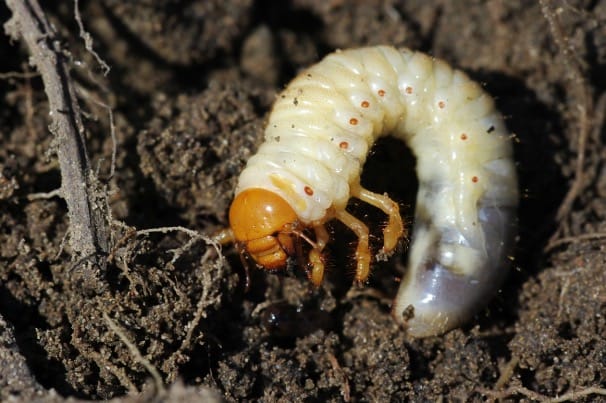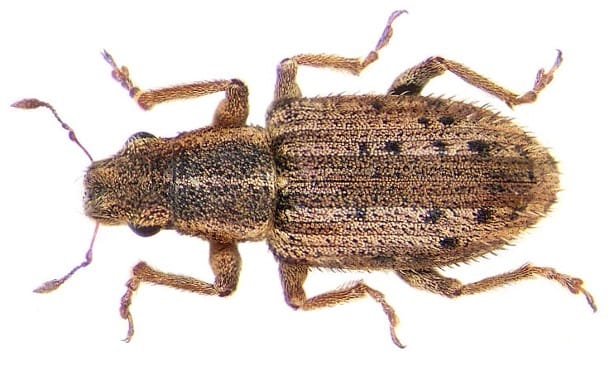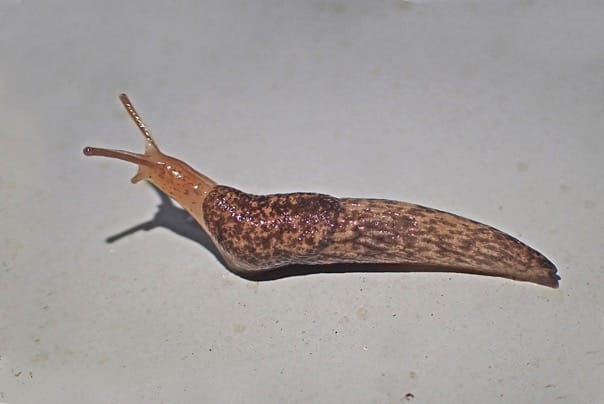As a progressive farmer managing a healthy pasture, you are worried about pests. In this article, I talk about important pests that you should know about. I also tell you how you could deal with them. Check out the following if you're looking to identify diseases in lucerne here or clover here. Also another article on weed control methods here. And as expected from the title of this blog, the following is what you can get from this article:
Pests and Pastures
Important pests that affect ryegrass pastures
The frit fly
Leatherjacket
Chafer beetle grub
Important pests that affect clover and lucerne pastures
Sitona weevil
Slug
Pests and Pastures
In general, livestock farmers choose to add ryegrass, lucerne and clover stands to their existing pasture. This gives them a higher yield in terms of dry matter per hectare as well as higher nutrition value.
However, this increases the chances of a pest attack. And because there is more at stake, you would want to protect yourself from these pest attacks. To do this, you need to know a few things about them.
Important pests that affect ryegrass pastures
Ryegrass is a low-risk, high-yield pasture species that is particularly well suited for the temperate climate of Southern Australia and New Zealand.
The frit fly, leatherjacket and chafer beetles are the most important pests that attack a ryegrass pasture. Let’s learn more about each of them.
The Frit Fly:
Frit flies in general can damage a range of cereals, grasses and spring sown maize. But more specifically, they can cause a lot of damage to ryegrass pastures. And amongst ryegrass varieties, the annual ryegrass is even more at risk from a frit fly attack.
Frit flies reproduce very quickly, producing three generations within a year. Mature females lay eggs on the grass. The eggs then become yellowish-white larvae.

The larvae continually feeds on the ryegrass shoots and becomes a pupa. This can either leave the plant stunted or even kill the plant. Pupa then mature into adult flies that continue this cycle.
Adult frit flies are particularly active during autumn. Why? Because their main egg laying period is just before autumn. This is why your autumn reseeds are at a greater risk of a frit fly attack.
So how do you control this? Firstly, your best bet is to plan your pasture reseeding outside the main frit fly egg laying. As discussed, this is just before autumn. So no autumn reseeding as much as possible.
Secondly, where possible, you could consider having a few rows of a different crop such as medics or brassica. This will prevent severe frit fly outbreaks from spreading across your farm.
And finally, as a last option, you could consider spraying chlorpyrifos. But this should be done with extreme caution as it can also reduce populations of beneficial beetles and microbes.
Most importantly, keep monitoring your ryegrass crop especially in the early stages so that you can take quick action if there is a frit fly attack.
Leatherjacket:
Leatherjackets are the larvae of craneflies commonly known as ‘daddy-long-legs’. They may look harmless at first, with no obvious head and no legs. Yet they can cause a lot of damage to your pasture.
They are housed in a tough and rubbery skin. Unlike the frit fly, they don’t move around a lot. This can make it harder to spot a leatherjacket outbreak. But here are a few indicators to be aware of.
First, most leatherjacket outbreaks happen around autumn and winter. So be extra careful in this season.
Second, look for patches of yellow or bare crop patches, this might indicate an outbreak. Because, leatherjackets attack plant stems at ground level causing it to turn yellow and then die.
And finally, be quick to investigate a paddock attracts a lot more birds than usual. This might indicate an outbreak. Because, a number of birds love to feast on leatherjacket grubs.

Controlling a leatherjacket outbreak is tricky as there are no straightforward solutions.
Chlorpyrifos can reduce their population drastically, especially if it is applied early, while the infestation is till mild. However, spraying also kills other beneficial microbes and insects.
On the other hand, preventive measures such as sampling your land for infestation during summer, ploughing your grasslands and practicing good crop rotation can help you prevent an outbreak.
Chafer beetle grub:
Chafer beetles lay their grubs in late autumn. The white grubs have a light brown head and three pairs of legs right under the head. The grubs feed on plant roots all winter, until they mature into beetles.
Chafer beetle grubs can significantly reduce yields of your ryegrass pasture. They affect perennial ryegrass stands more. Similar to leatherjackets, an outbreak cannot easily be spotted, early on.

However, you can look for two key indicators. Brown bald patches of crops and an unusually high number of birds flocking a particular part of your farm. These might indicate an outbreak.
There are no clear control measures. Rows of other crops such as brassicas or medics between stands of clover and lucerne pastures can help. Similarly crop rotation, ploughing and reseeding can also help. But these are all preventive measures and not things you can put in place after an outbreak.
You might have to consult with a farm advisor if a chafer outbreak gets out of hand.
Important pests that affect clover and lucerne pastures
Clover and lucerne are both high quality, protein rich, leguminous fodder crops that can be grown in rain fed as well as irrigated conditions.
However, sitona weevils and slugs can cause a lot of damage to them. Let’s learn more about both these pests.
Sitona Weevils:
Weevils are grey to dark grey-brown bugs that can fly over reasonably long distances. This means you can get a weevil attack even from another neighboring farm.
Weevils are typically most active around summer and autumn. They lay eggs in autumn and the next generation matures just around the following summer.

Adult weevils love to feed on the leguminous leaves of clover and lucerne. They cut ‘U’ shaped notches into the edges of leaves they feed upon. Weevil larvae also damage legume root nodules. This reduces the plant’s ability to fix nitrogen. This also increases the chances of a crown or root rot fungi infection.
There are no known chemical control solutions for a sitona weevil attack.
Slugs:
There are many types of slugs. However, you are most likely to encounter the common grey field slug. They graze a lot and can breed through the year. A pregnant female can lay up to 300 eggs in one cycle.
So it is important to take quick action immediately. You can identify a slug attack easily as they leave behind a slimy trail just like snails. In fact, they are snails without shells.

Slugs particularly affect new clover seedlings and reseeds more than mature swards. If an infestation occurs, quickly setup slug traps to assess population numbers and identify fields that are at most risk.
If each trap catches four or more slugs under a day, it means you have to intervene chemically. You might have to use slug pellets made of methiocarb, metaldehyde, ferric phosphate or copper silicate.
There we learnt about five pests. You might have noticed a couple of common patterns in all of them. First, preventive measures such as rotation cropping, ploughing, planting barrier crops and early sampling are your biggest weapons against pests. So use them wisely even before you face a pest attack.
More importantly, take quick, decisive action early on and prevent large scale outbreaks. Intervene chemically only when absolutely needed as a last resort. I hope these two key takeaways are useful.
This brings us to the end of this article. If you found it useful please share it with other farmers you know. If you have any questions, please let me know. I promise to answer them for you in the comments below.
Thanks for reading and until we meet in another article, happy farming!
- The Dedicated Team of Pasture.io, 2020-03-11